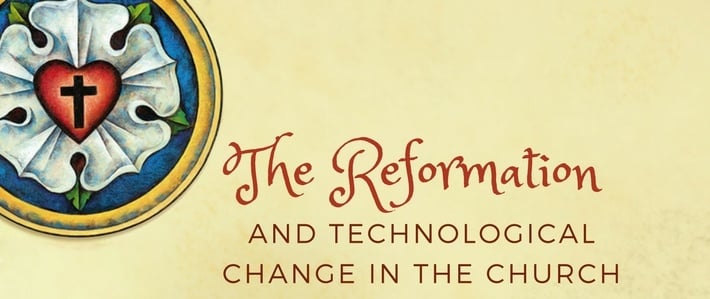
“Immortal God, what a world I see dawning. Why can I not be young again?”
The Dutch scholar Erasmus wrote these words in 1517, enraptured by the possibilities created by the Renaissance. The zeitgeist of the Renaissance was closely entwined with that of the Reformation, also dawning in 1517, as Europeans awakened to new ways of seeing the world and understanding their individual roles in it.
It was technology that enabled the ideas of the Renaissance and Reformation to spread like wildfire around Europe: Gutenberg’s moveable type printing press drastically increased the speed and accessibility of information. This technological innovation not only transformed the way ideas were spread, but also played a significant part in developing the ideas themselves, as more and more people were able to consider themselves readers, writers, and independent thinkers.
Changing How We Think
On the five-hundredth anniversary of the Reformation, we find ourselves, just like Erasmus and Luther, in a world on the cusp of tremendous social and cultural change. And just like during the Reformation and Renaissance, technology is inextricably interwoven with this change. Social media, virtual and augmented reality, smart phones and apps, and the internet not only change how our ideas are shared but also have the ability to shape the ideas themselves, to even change the way our brains process information.
How do we, as twenty-first century Christians, respond to transformative innovation? It is easy to react with fear when we encounter change. Yet, as Paul reminds us in 2 Timothy 1:7, “God gave us a spirit not of fear but of power and love and self-control.” Just as Luther harnessed the power of the printing press to spread word of God’s grace, we too can wisely and carefully use the power of emerging technology to share the love of Jesus.
Intertwining Technology and Faith
Gutenberg’s Bible was heavy and expensive. Today, anyone with a smartphone can carry the Bible in his or her pocket, including The Lutheran Study Bible. CPH apps such as PrayNow, Portals of Prayer, and Luther’s Small Catechism help make personal study and devotion easily accessible and adaptable.
The printing press allowed broadsheets and pamphlets to be distributed throughout Europe in a matter of weeks, the sixteenth-century equivalent of “going viral,” and this new ease of sharing information helped build a community of believers across the continent. Today, within seconds, the internet can help facilitate the growth of a global community of Christians. Online Bible studies help us grow in fellowship with other believers, while thoughtful social media can open doors of community that modern societies are increasingly longing for.
Responding to Tech Changes in the Church
The teachings of the great thinkers of the sixteenth-century, such as Luther and Erasmus, still reach us today, largely because those people were unafraid to adapt and take advantage of emerging technology. We, too, need to be ready to respond to the “new world dawning.” Imagine, for example, how virtual reality could help bring Bible stories to life or help us explore the beauty and mystery of God’s creation. Imagine how we might use technology to bridge distances, bringing people from the opposite sides of the world into the same room and helping them speak the same language, so we can be blessed by our differences and unified by the faith we share.
Conversely, it would be dangerous to not be aware of how technology could further divide or distract us in our mission. Technology has the power to isolate people as much as it has the power to bring them together. No technology can replace a face-to-face conversation, a shared meal, a handshake, or a hug. Even more dangerously, it would be sinful to make innovation an idol. We always must remember that it is the Holy Spirit who kindles and sustains faith and that God never changes. But culture and customs do. We pray that we have the courage, humility, and perception to use the tools of this changing world in order to fulfill our mission of joyfully and fearlessly spreading God’s unchanging love.
Learn more about the use of technology in your church by subscribing to this blog.
























